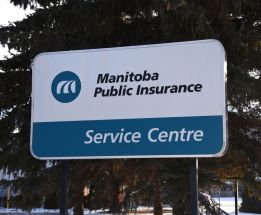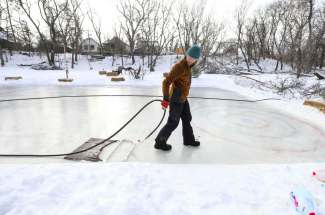Light could be brighter at end of holiday tunnel Officials will soon have clearer picture of COVID damage wrought by festive-season scofflaws, chances of easing restrictions
Read this article for free:
or
Already have an account? Log in here »
To continue reading, please subscribe:
Monthly Digital Subscription
$0 for the first 4 weeks*
- Enjoy unlimited reading on winnipegfreepress.com
- Read the E-Edition, our digital replica newspaper
- Access News Break, our award-winning app
- Play interactive puzzles
*No charge for 4 weeks then price increases to the regular rate of $19.95 plus GST every four weeks. Offer available to new and qualified returning subscribers only. Cancel any time.
Monthly Digital Subscription
$4.99/week*
- Enjoy unlimited reading on winnipegfreepress.com
- Read the E-Edition, our digital replica newspaper
- Access News Break, our award-winning app
- Play interactive puzzles
*Billed as $19.95 plus GST every four weeks. Cancel any time.
To continue reading, please subscribe:
Add Free Press access to your Brandon Sun subscription for only an additional
$1 for the first 4 weeks*
*Your next subscription payment will increase by $1.00 and you will be charged $16.99 plus GST for four weeks. After four weeks, your payment will increase to $23.99 plus GST every four weeks.
Read unlimited articles for free today:
or
Already have an account? Log in here »
Hey there, time traveller!
This article was published 11/01/2021 (1820 days ago), so information in it may no longer be current.
Manitobans should have a better idea by the end of the week whether the province will ease restrictions after public-health orders expire Jan. 22. So far, it’s looking promising.
Friday marks the end of a two-week period after the holidays. That’s the time it usually takes for people infected with COVID-19 to show symptoms. By then, the province will have reliable data on how social gatherings over Christmas and New Year’s Eve impacted the spread of the virus.
There was a bump in case numbers two weeks after Christmas Day. But infections are falling again, albeit slowly. The number of people in hospital with COVID-19 has also declined.
The long-term trend (between early November, when Manitoba began its code-red restrictions, and now) is also encouraging: case numbers, test-positivity rates and hospitalizations are all down. They are nowhere near as low as they were prior to Thanksgiving, but they continue to trend in the right direction.
The number of working hours health-care staff lost due to sickness — about 102,000 hours over the last two-week period — has also declined. It’s an important indicator of hospital capacity. That figure is down 10,000 hours from a peak in late November. It’s still higher than the five-year average for that period (85,000 hours), but it’s improving.
“Today’s numbers are encouraging,” chief provincial public health officer Dr. Brent Roussin said Monday, who sounded more upbeat than he did last week when reviewing post-holiday data.
Roussin released data last week that showed many Manitobans violated public-health orders by gathering outside their households. Despite that, there hasn’t been a major spike in case numbers.
That could change. Figures are still coming in from New Year’s celebrations. Roussin said there were close to 3,000 close contacts over the holidays identified so far, some of which will likely become cases. Data released over the next few days will paint a clearer picture.
There are still troubling signs the virus is circulating at high levels, especially in northern communities. Manitoba’s test-positivity rate remains high at 10 per cent. (Although it’s fallen to 8.8 per cent in Winnipeg — the lowest it’s been since early November).
There are threats around us: case numbers in other parts of Canada are soaring, including in Ontario and Quebec. Three new, more contagious variants have been identified around the world, some of which have shown up in Canada (but not Manitoba).
None of those factors can be ignored.
Still, if cases and hospitalization numbers continue to fall this week, it’s expected the Pallister government will ease some restrictions beginning Jan. 23.
Roussin says the province plans to survey Manitobans to find out what their priorities are on a proposed reopening plan. He said not everything can reopen at once; the province will have to make choices on what restrictions remain in place.
Small business should be at the front of the line. They have borne the greatest brunt of the lockdown (in many cases with little to no evidence that the virus was circulating in their places of business). It doesn’t mean bars and restaurants should resume normal business. But if the numbers warrant, shuttered retailers should be allowed to resume in-store operations with limited capacity. They have suffered the most economically and deserve relief.
What should not change is the ban on socializing between households. That should be one of the last restrictions lifted. It’s done the most damage, in part because the province was slow to respond to it.
It’s still too early to tell whether restrictions should be lifted at all. Hospitals remain over capacity and Manitoba’s COVID-19 case fatality rate continues climb as a percentage of the national average. The province needs to see a consistent decline in case numbers, the test-positivity rate and hospitalizations over the next week before relaxing any rules.
So far, the data looks positive.
tom.brodbeck@freepress.mb.ca

Tom Brodbeck is an award-winning author and columnist with over 30 years experience in print media. He joined the Free Press in 2019. Born and raised in Montreal, Tom graduated from the University of Manitoba in 1993 with a Bachelor of Arts degree in economics and commerce. Read more about Tom.
Tom provides commentary and analysis on political and related issues at the municipal, provincial and federal level. His columns are built on research and coverage of local events. The Free Press’s editing team reviews Tom’s columns before they are posted online or published in print – part of the Free Press’s tradition, since 1872, of producing reliable independent journalism. Read more about Free Press’s history and mandate, and learn how our newsroom operates.
Our newsroom depends on a growing audience of readers to power our journalism. If you are not a paid reader, please consider becoming a subscriber.
Our newsroom depends on its audience of readers to power our journalism. Thank you for your support.








